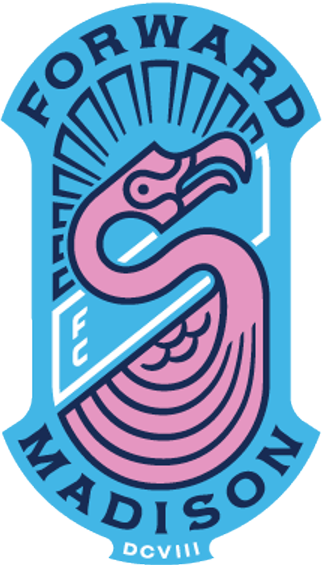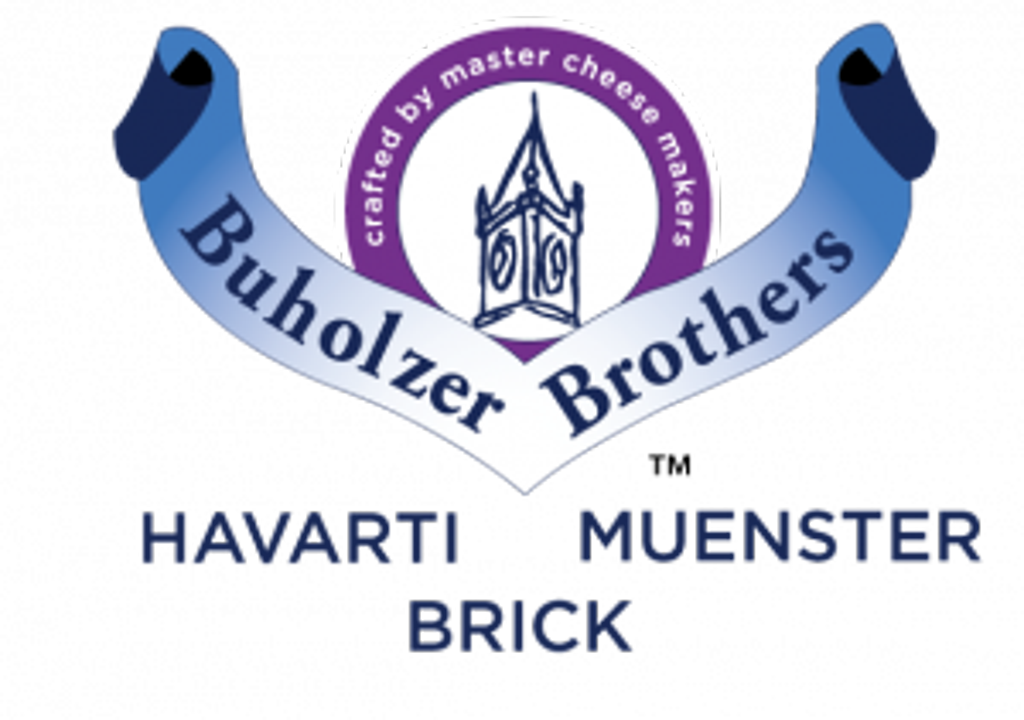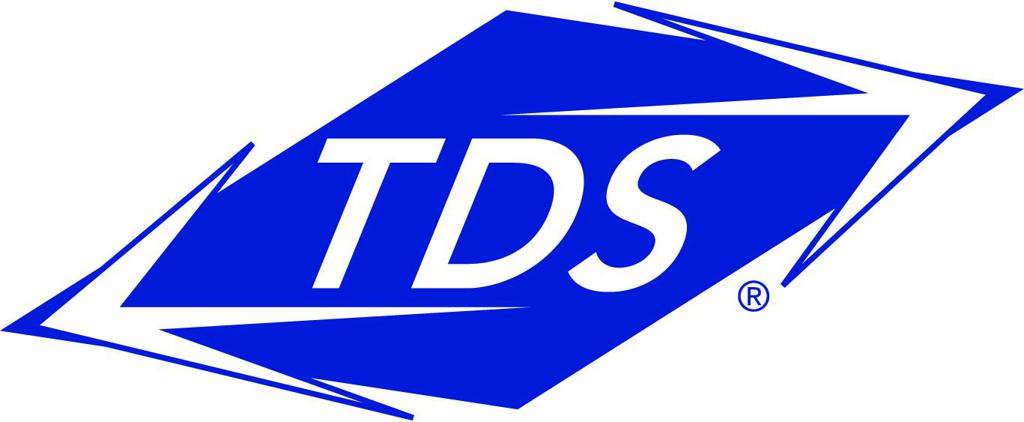By: Matt Hermann
In 2018, when America’s top flight soccer league is expanding year after year, and cities across the country are embracing their lower division clubs, it’s easy to forget that less than a quarter-century ago the soccer landscape was very different. Back in 1995, NASL was a bittersweet memory; Major League Soccer wasn’t quite off the ground yet.
Perhaps the highest level of men’s soccer (at least of the outdoor variety) was played at the college level. And in that year, University of Wisconsin-Madison reigned supreme, defeating Duke University 2-0 in the final.
The victory, sealed by goals from Lars Hansen and Chad Cole, capped off a dominating finish to the season. In their final seven games, the Badgers didn’t surrender a single goal.
It had been a slow road to the top. Badgers coach Jim Launder had been in Madison since the late 1970s, serving first as an assistant to head coach and program founder Bill Reddan before the two men swapped roles in 1982. For the rest of the 1980s, UW posted winning seasons under Launder, but struggled to pick up the victories that would guarantee entry to the NCAA tournament.
The program was lagging behind its rivals, but a change in the team’s status with the University set them on a new course, says Launder.
“We got scholarships approved during that 1991 season – that allowed us to go out and recruit some very good freshmen for the next year.”
Scholarships in hand, Launder and his staff scoured the midwest for soccer talent. They struck gold with a trio of players from the Detroit suburbs: all-action central midfielder Mike Gentile, free-scoring forward Travis Roy, and tough, powerful defender Scott Lamphear.
“It was good they all lived close by each other,” Launder says. “Our recruiting budget still wasn’t very big and I could take just one flight and visit all their houses in one trip.”
When Gentile arrived in Madison to join the team ahead of his freshman year, he could tell something was happening.
“It wasn’t just us Michigan guys, they’d found eight or nine good freshmen that year, guys who had played at a high level with their home clubs and who were ready to contribute right away,” he says.
Gentile was right. The crop of freshmen who arrived in 1992 would eventually become the spine of a championship team.
For a time it looked as though the Badgers’ young talent might bloom even sooner. After taking down traditional Big Ten soccer powerhouse Indiana University in the NCAA tournament in 1993, the Badgers found themselves in the national quarterfinals.
Awaiting them there was the University of Virginia, who had won back-to-back NCAA titles under then-coach Bruce Arena. The Cavaliers, led by future US mens’ national team midfield legend Claudio Reyna, dealt Wisconsin a 3-0 loss and went on to win the title that year – and another the year after. The defeat stung, but gave the young Badgers an appetite for more.
“We came out of that season thinking positively,” says Gentile. “It taught us we could compete with the best.”
Expectations were high in 1994, and the team’s 14-6 record meant the Badgers received another NCAA tournament bid. But the season ended in disappointment – a 2-1 loss in the first round at Southern Methodist University in Dallas.
“We kind of stunk up the bed in that game,” says Launder. “They were just much tougher than us.”
Entering the 1995 season, Launder says he told the players to take inspiration from the NBA. The Chicago Bulls had drawn a lesson from their loss in the 1990 conference finals to the ultra-physical ‘bad boy’ Detroit Pistons: Stand up, don’t back down, just play your game and win. With that mentality, Michael Jordan and co. were able to turn a 4-3 series loss into a 4-0 sweep in 1991 and go on to claim an NBA title.
“We reacted the right way to that loss in Dallas,” says Gentile. “We could have said ‘we were better’ and not learned anything, but luckily we knew we needed to prove it.”
That year, Launder and assistant coach Ian Barker emphasized not only physical toughness but mental toughness too – a kind of disciplined concentration which paid dividends in the team’s defense. The Badgers finished their 19-game regular season having surrendered just 11 goals, and entered the NCAA tournament as Big Ten co-champions.
The first two rounds brought two shutout wins at home over Bowling Green and William & Mary, setting up the match-up the team was looking for: a date with SMU.
The Badgers’ preparations went according to plan, except for an untimely injury to goalkeeper Todd Wilson, which meant reserve keeper Jon Belskis had to step in for the re-match in Dallas.
The Mustangs came out hard, pressing Wisconsin from the outset and looking to provoke yellow cards with enthusiastic challenges. But the home team’s attack struggled to create chances from open play, and Belskis showed he was steady when he needed to be, collecting the ball on set pieces.
“Jon hadn’t played one minute that season,” says former winger Lars Hansen. “We all thought we might have to keep the ball away from him, but it turns out we shouldn’t have worried.”
After weathering the first half storm, in the locker room Launder says he told the squad “Just wait. They can’t keep this up for much longer. When they let up, that’s your chance to take it to them.”
And so it played out. The Badgers scored early in the second half, added another goal ten minutes later, and relied on their defense to kill off the remainder of game. As the final whistle blew, Wisconsin knew they’d slain their dragon. The Badgers’ 2-0 win put them in the national semifinals. Now it was a whole new ballgame.
“The team had got together at the start of the season and said ‘we want to get to the final four’,” says Launder. Once they’d beaten SMU it turned into something different, he says.
“Well if we’re going to the final four, we might as well win it!”
UW came into the 1995 final four as outsiders. In contrast to UVA, Duke and the University of Portland, Wisconsin was the only program that had never reached the semifinal round before. Still, the team had a feeling.
“Whenever people ask me about that year,” says Gentile, “I tell them this: We knew we weren’t going to get beaten.”
“We knew we were a great team – or that we could be one,” says Hansen. “We approached that season with a lot of focus, and once we got that far we knew it could be our time.”
Adding fuel to the team’s fire was Hansen’s personal determination to succeed after tragedy. During preparations for his senior season, the Norwegian winger’s parents were involved in a major car crash in Sweden.
“I was doing some apartment hunting for a new place for me and Travis [Roy] and Alastair [Steel, another teammate], says Hansen. “Scott Lamphear called me and told me I needed to remain at home. Bill Reddan came over and gave me the news.”
The seasoned assistant coach told Hansen his father had been killed, and that his mother was in a coma.
Hansen rushed back to Norway. He missed the start of the season – and his final semester. Not until six weeks later, after prodding from his sister as well as a heartfelt letter from the team and coaching staff, did Hansen decide to make the trip back to Madison. He’d finish his degree, and he’d play, in his words, “as a tribute to my dad, who had been my coach up until I was 16.”
After missing the preseason, Hansen admits had to play himself back into shape. But by final four weekend, he was on a roll.
Growing up, Hansen says he had always been a set-up man, not a goalscorer. And for much of his career at UW, he was a first option off the bench – a winger whose quickness and guile when the team needed a boost helped make space for other attacking players to finish.
Somehow, at the close of the 1995 season, it was a time for the roles to reverse. Hansen took center stage, scoring again and again. He’d struck an extra time winner in Wisconsin’s 1-0 result over William and Mary in the second round of the tournament, and in the semifinal against Portland, Hansen would have another chance at glory.
“Alastair brought the ball up the left side and found Gentile on a run,” says Hansen. “He held the ball right up to the end line, right until he was about to get tackled, and then he just popped it into the middle.”
The man waiting for the cutback? Hansen, who tapped the ball in from close range.
“The goal itself was nothing special,” he says.
Still, Hansen had scored the winner in two of the team’s last three games; the possibility that he would have another dose of “nothing special” ready for the final seemed distinct.
After stunning UVA in the other semifinal, Duke awaited the Badgers in the final. The unexpected match-up felt like another part of Wisconsin’s path to a championship – one that gave them an opportunity to play on the front foot.
“We were a good countering team, but we knew how to keep the ball too. We had a lot of it in the final, and I think we controlled that game,” says Gentile.
In the eighth minute, Wisconsin won a corner and got just the chance they wanted. A knock-down header found center forward Travis Roy alone in the penalty area. His shot was parried by the Duke keeper, but only as far as the feet of Hansen, who blasted the ball into the net. Another critical close-range goal from the Norwegian that helped the Badgers seal their championship. This time, it was special, Hansen says.
“I could feel my dad’s presence that day.”
When they arrived back in Madison, the team were welcomed by a student band at the airport. Friends told tales of raucous support at State Street Brats, where fans plucked up Jim Launder’s kids to stand on top of the high tables in the bar so they could see their dad’s team win a championship.
The Badgers haven’t won another title since – and haven’t been back to the final four either. 1995 was a fairy-tale run for a good program that put together one spectacular team.
“Whenever I’d go to play with the national team, you had guys asking ‘Wisconsin? Who’s Wisconsin?’,” says Gentile.
That year was their answer.
By: Matt Hermann
In 2018, when America’s top flight soccer league is expanding year after year, and cities across the country are embracing their lower division clubs, it’s easy to forget that less than a quarter-century ago the soccer landscape was very different. Back in 1995, NASL was a bittersweet memory; Major League Soccer wasn’t quite off the ground yet.
Perhaps the highest level of men’s soccer (at least of the outdoor variety) was played at the college level. And in that year, University of Wisconsin-Madison reigned supreme, defeating Duke University 2-0 in the final.
The victory, sealed by goals from Lars Hansen and Chad Cole, capped off a dominating finish to the season. In their final seven games, the Badgers didn’t surrender a single goal.
It had been a slow road to the top. Badgers coach Jim Launder had been in Madison since the late 1970s, serving first as an assistant to head coach and program founder Bill Reddan before the two men swapped roles in 1982. For the rest of the 1980s, UW posted winning seasons under Launder, but struggled to pick up the victories that would guarantee entry to the NCAA tournament.
The program was lagging behind its rivals, but a change in the team’s status with the University set them on a new course, says Launder.
“We got scholarships approved during that 1991 season – that allowed us to go out and recruit some very good freshmen for the next year.”
Scholarships in hand, Launder and his staff scoured the midwest for soccer talent. They struck gold with a trio of players from the Detroit suburbs: all-action central midfielder Mike Gentile, free-scoring forward Travis Roy, and tough, powerful defender Scott Lamphear.
“It was good they all lived close by each other,” Launder says. “Our recruiting budget still wasn’t very big and I could take just one flight and visit all their houses in one trip.”
When Gentile arrived in Madison to join the team ahead of his freshman year, he could tell something was happening.
“It wasn’t just us Michigan guys, they’d found eight or nine good freshmen that year, guys who had played at a high level with their home clubs and who were ready to contribute right away,” he says.
Gentile was right. The crop of freshmen who arrived in 1992 would eventually become the spine of a championship team.
For a time it looked as though the Badgers’ young talent might bloom even sooner. After taking down traditional Big Ten soccer powerhouse Indiana University in the NCAA tournament in 1993, the Badgers found themselves in the national quarterfinals.
Awaiting them there was the University of Virginia, who had won back-to-back NCAA titles under then-coach Bruce Arena. The Cavaliers, led by future US mens’ national team midfield legend Claudio Reyna, dealt Wisconsin a 3-0 loss and went on to win the title that year – and another the year after. The defeat stung, but gave the young Badgers an appetite for more.
“We came out of that season thinking positively,” says Gentile. “It taught us we could compete with the best.”
Expectations were high in 1994, and the team’s 14-6 record meant the Badgers received another NCAA tournament bid. But the season ended in disappointment – a 2-1 loss in the first round at Southern Methodist University in Dallas.
“We kind of stunk up the bed in that game,” says Launder. “They were just much tougher than us.”
Entering the 1995 season, Launder says he told the players to take inspiration from the NBA. The Chicago Bulls had drawn a lesson from their loss in the 1990 conference finals to the ultra-physical ‘bad boy’ Detroit Pistons: Stand up, don’t back down, just play your game and win. With that mentality, Michael Jordan and co. were able to turn a 4-3 series loss into a 4-0 sweep in 1991 and go on to claim an NBA title.
“We reacted the right way to that loss in Dallas,” says Gentile. “We could have said ‘we were better’ and not learned anything, but luckily we knew we needed to prove it.”
That year, Launder and assistant coach Ian Barker emphasized not only physical toughness but mental toughness too – a kind of disciplined concentration which paid dividends in the team’s defense. The Badgers finished their 19-game regular season having surrendered just 11 goals, and entered the NCAA tournament as Big Ten co-champions.
The first two rounds brought two shutout wins at home over Bowling Green and William & Mary, setting up the match-up the team was looking for: a date with SMU.
The Badgers’ preparations went according to plan, except for an untimely injury to goalkeeper Todd Wilson, which meant reserve keeper Jon Belskis had to step in for the re-match in Dallas.
The Mustangs came out hard, pressing Wisconsin from the outset and looking to provoke yellow cards with enthusiastic challenges. But the home team’s attack struggled to create chances from open play, and Belskis showed he was steady when he needed to be, collecting the ball on set pieces.
“Jon hadn’t played one minute that season,” says former winger Lars Hansen. “We all thought we might have to keep the ball away from him, but it turns out we shouldn’t have worried.”
After weathering the first half storm, in the locker room Launder says he told the squad “Just wait. They can’t keep this up for much longer. When they let up, that’s your chance to take it to them.”
And so it played out. The Badgers scored early in the second half, added another goal ten minutes later, and relied on their defense to kill off the remainder of game. As the final whistle blew, Wisconsin knew they’d slain their dragon. The Badgers’ 2-0 win put them in the national semifinals. Now it was a whole new ballgame.
“The team had got together at the start of the season and said ‘we want to get to the final four’,” says Launder. Once they’d beaten SMU it turned into something different, he says.
“Well if we’re going to the final four, we might as well win it!”
UW came into the 1995 final four as outsiders. In contrast to UVA, Duke and the University of Portland, Wisconsin was the only program that had never reached the semifinal round before. Still, the team had a feeling.
“Whenever people ask me about that year,” says Gentile, “I tell them this: We knew we weren’t going to get beaten.”
“We knew we were a great team – or that we could be one,” says Hansen. “We approached that season with a lot of focus, and once we got that far we knew it could be our time.”
Adding fuel to the team’s fire was Hansen’s personal determination to succeed after tragedy. During preparations for his senior season, the Norwegian winger’s parents were involved in a major car crash in Sweden.
“I was doing some apartment hunting for a new place for me and Travis [Roy] and Alastair [Steel, another teammate], says Hansen. “Scott Lamphear called me and told me I needed to remain at home. Bill Reddan came over and gave me the news.”
The seasoned assistant coach told Hansen his father had been killed, and that his mother was in a coma.
Hansen rushed back to Norway. He missed the start of the season – and his final semester. Not until six weeks later, after prodding from his sister as well as a heartfelt letter from the team and coaching staff, did Hansen decide to make the trip back to Madison. He’d finish his degree, and he’d play, in his words, “as a tribute to my dad, who had been my coach up until I was 16.”
After missing the preseason, Hansen admits had to play himself back into shape. But by final four weekend, he was on a roll.
Growing up, Hansen says he had always been a set-up man, not a goalscorer. And for much of his career at UW, he was a first option off the bench – a winger whose quickness and guile when the team needed a boost helped make space for other attacking players to finish.
Somehow, at the close of the 1995 season, it was a time for the roles to reverse. Hansen took center stage, scoring again and again. He’d struck an extra time winner in Wisconsin’s 1-0 result over William and Mary in the second round of the tournament, and in the semifinal against Portland, Hansen would have another chance at glory.
“Alastair brought the ball up the left side and found Gentile on a run,” says Hansen. “He held the ball right up to the end line, right until he was about to get tackled, and then he just popped it into the middle.”
The man waiting for the cutback? Hansen, who tapped the ball in from close range.
“The goal itself was nothing special,” he says.
Still, Hansen had scored the winner in two of the team’s last three games; the possibility that he would have another dose of “nothing special” ready for the final seemed distinct.
After stunning UVA in the other semifinal, Duke awaited the Badgers in the final. The unexpected match-up felt like another part of Wisconsin’s path to a championship – one that gave them an opportunity to play on the front foot.
“We were a good countering team, but we knew how to keep the ball too. We had a lot of it in the final, and I think we controlled that game,” says Gentile.
In the eighth minute, Wisconsin won a corner and got just the chance they wanted. A knock-down header found center forward Travis Roy alone in the penalty area. His shot was parried by the Duke keeper, but only as far as the feet of Hansen, who blasted the ball into the net. Another critical close-range goal from the Norwegian that helped the Badgers seal their championship. This time, it was special, Hansen says.
“I could feel my dad’s presence that day.”
When they arrived back in Madison, the team were welcomed by a student band at the airport. Friends told tales of raucous support at State Street Brats, where fans plucked up Jim Launder’s kids to stand on top of the high tables in the bar so they could see their dad’s team win a championship.
The Badgers haven’t won another title since – and haven’t been back to the final four either. 1995 was a fairy-tale run for a good program that put together one spectacular team.
“Whenever I’d go to play with the national team, you had guys asking ‘Wisconsin? Who’s Wisconsin?’,” says Gentile.
That year was their answer.






































































































































































































































































































































